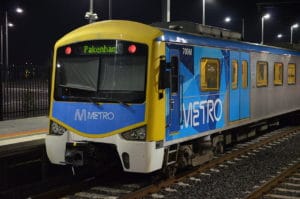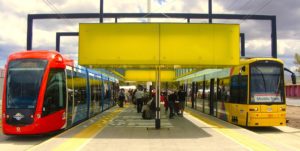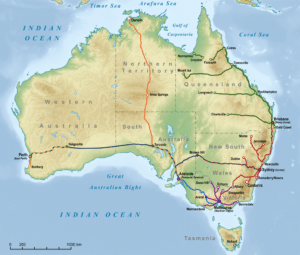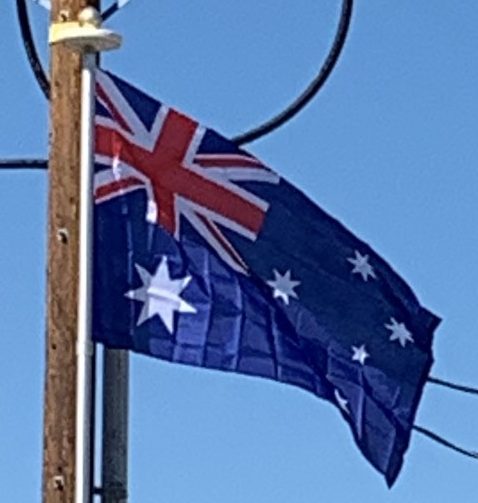
Trams and Light Rail:
Trams have historically operated in many Australian towns and cities, with the majority of these being shut down before the 1970s in the belief that more widespread car ownership would render them unnecessary. Melbourne is a major exception and today has the largest tram network of any city in the world. Adelaide also retained one tram service – the Glenelg tram, since extended from 2008 onwards to Hindmarsh and the East End. Trams had operated in a number of major regional cities including Ballarat, Bendigo, Brisbane, Broken Hill, Fremantle, Geelong, Hobart, Kalgoorlie, Launceston, Maitland, Newcastle, Perth, Rockhampton, Sorrento, Sydney and St Kilda.

A modern light rail system opened in Sydney in 1997 with the conversion of a disused section of a freight railway line into what is now part of the Dulwich Hill Line. A second CBD and South East Light Rail line in Sydney is currently under construction and is due to open in 2019. A light rail system opened on the Gold Coast in 2014. A line opened in Newcastle in February 2019, with a line Canberra scheduled to open in April 2019.
Rapid Transit:
Major cities in Australia do not currently have full-fledged rapid transit systems, however a driverless rapid transit system in Sydney is currently under construction with completion of its first stage in 2019. Sydney, Melbourne, Brisbane and Perth’s commuter systems are all partially underground and reflect some aspects of typical rapid transit systems, particularly in the city centres.
Rail:
The railway network is large, comprising a total of 33,819 km (2,540 km electrified) of track. Rail transport started in the various colonies at different dates. Privately owned railways started the first lines, and struggled to succeed on a remote, huge, and sparsely populated continent, and government railways dominated.
The Great Southern Rail, operates three trains: the Indian Pacific (Sydney-Adelaide-Perth), The Ghan (Adelaide-Alice Springs-Darwin) and The Overland (Melbourne-Adelaide). NSW owned NSW TrainLink services link Brisbane, Canberra and Melbourne to Sydney. Since the extension of the Ghan from Alice Springs to Darwin was completed in 2004, all mainland Australian capital cities are linked by standard gauge rail, for the first time.

There are various state and city rail services operated by a combination of government and private entities, the most prominent of these include V/Line (regional trains and coaches in Victoria); Metro Trains Melbourne (suburban services in Melbourne); NSW TrainLink (regional trains and coaches in New South Wales); Sydney Trains (suburban services in Sydney); Queensland Rail (QR) operating long distance Traveltrain services and the City network in South-East Queensland, and Transwa operating train and bus services in Western Australia.
In Tasmania, TasRail operates a short haul narrow gauge freight system, that carries inter-modal and bulk mining goods. TasRail is government owned (by the State of Tasmania) and is going through a significant below and above rail upgrades with new locomotives and wagons entering service. Significant bridge and sleeper renewal has also occurred. The Tasmanian Government also operates the West Coast Wilderness Railway as a tourist venture over an isolated length of track on Tasmania’s West Coast.
Air:
Qantas is the flag carrier of Australia. The Australian National Airways was the predominant domestic carrier from the mid-1930s to the early 1950s. After World War II, Qantas was nationalized and its domestic operations were transferred to Trans Australia Airlines. The Two Airlines Policy was establish to protect both airlines. However, ANA’s leadership was quickly eroded by TAA, and it was sold to Ansett Airways in 1957. The duopoly continued over the next four decades. In the mid 1990s Qantas was merged with TAA and later privatized. Ansett collapsed in September 2001. In the following years, Virgin Australia became a challenger to Qantas. Both companies launched low-cost subsidiaries Jetstar and Tiger Airways Australia respectively.
